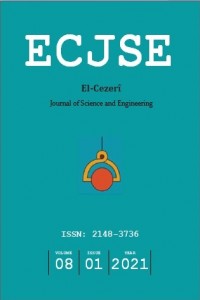Abstract
Dövme yöntemi, tarihte bilinen en eski üretim yöntemlerinden biri olmakla birlikte günümüzde de imalat endüstrisinde sıklıkla kullanılmaktadır. 2019’da dünya geneline bakıldığında, dövme endüstrisinin gayri safi milli hasılaya etkisinin %20 olduğu görülmektedir. Dövme işleminin endüstriyel ekonomi, toplum ve ulusal güvenlik gibi kritik öneme sahip, yüksek mukavemet isteyen üretimi zorlu parçalar için kullanılan bir işlem olarak popülerliğini artıracağı öngörülmektedir. Dolayısıyla sektördeki firmaların imalat hatlarını, performanslarını ve ürün gamlarındaki kalitelerini geliştirmesi gerekmektedir. Dövme işleminde üretim performansını ve kalitesini etkileyen en önemli unsur ise dövme kalıplarında görülen hasarlardır. Literatür incelemelerinde dövme kalıplarındaki hasar sebeplerinin başında aşınmanın geldiği belirlenmiştir. Dolayısıyla kalıp malzemelerinin aşınma dayanımlarını geliştirmenin, sektör için elzem olduğu yadsınamaz bir gerçektir. Bu kapsamda geliştirilen en önemli yöntem malzeme yüzeylerinin sert bir tabaka ile kaplanması işlemidir. Özellikle Fiziksel Buhar Biriktirme (PVD) işlemi ile yüzeye kaplanan nitrür esaslı tabakaların, malzemelerin aşınma özelliklerine eşsiz katkılar sunduğu belirlenmiştir. Kaplanmış malzemenin aşınma performansı, laboratuvar ortamında üretimin çalışma prensibini yansıtacak şekilde aşınma düzenekleri kullanılarak belirlenmektedir. Ancak değerlendirmelerde, bu düzeneklerin dövme işlemini yansıtmada yetersiz kaldığı dolayısıyla bulguların, mevcut işlem koşullarında değerlendirilmesinin uygun olmadığı düşünülmektedir. Bu doğrultuda, tespit edilen bu önemli eksikliğin giderilmesi amacıyla patent başvurusu da gerçekleştirilen, aşınma test cihazı tasarlanmış ve diğer düzeneklerin eksikliklerini nasıl gidereceği konusunda detaylı analiz verilmiştir.
Keywords
Supporting Institution
TÜBİTAK
Project Number
5190089
Thanks
Bu çalışma 5190089 No’lu TÜBİTAK 1505-Üniversite-Sanayi İş Birliği kapsamında ve FSI-2019-8473 proje numarası ile Karadeniz Teknik Üniversitesi tarafından desteklenmektedir. TÜBİTAK ve Karadeniz Teknik Üniversitesi Rektörlüğü’ne teşekkür ederiz.
References
- Referans1: [1] Chen, S., Qin, Y., Chen, J. G., Choy, C-M., “A forging Method for Reducing Process Steps in the Forming of Automotive Fasteners”, International Journal of Mechanical Sciences, 2018, 137: 1-14.
Abstract
Although the forging is one of the oldest production method in history, it is frequently used in the manufacturing industry today. Looking at the world in 2019, it is seen that the impact of the forging industry on the gross national product (gnp) was 20%. It is predicted that the forging will increase its popularity as a process that is used for demanding parts that require high strength and are critical to industrial economy, society and national security. Therefore, companies in the sector need to improve their production lines, performance and quality in the product ranges. The most important factor affecting the production performance and quality in the forging process is the damage seen in the forging dies. In the literature reviews, it was determined that the leading cause of damage in forging die was wear. Therefore, it is an undeniable fact that improving the wear resistance of die materials is essential for the forging industry. The most important method developed in this context is the process of covering the material surface with a hard layer. Particularly, it has been determined that the nitride-based layers coated on the surface using Physical Vapor Deposition (PVD) provide unique contributions to the wear properties of the materials. The wear performance of the coated material is determined by using wear mechanisms in a laboratory environment to reflect the working principle of production. However, in the evaluations, it is considered that these devices are insufficient to reflect the forging process, so it is considered inappropriate to evaluate the findings under the current process conditions. In this direction, in order to eliminate this important deficiency, a wear test device which a patent application was also made was designed and detailed analysis was given on how to eliminate the deficiencies of other mechanisms.
Keywords
Project Number
5190089
References
- Referans1: [1] Chen, S., Qin, Y., Chen, J. G., Choy, C-M., “A forging Method for Reducing Process Steps in the Forming of Automotive Fasteners”, International Journal of Mechanical Sciences, 2018, 137: 1-14.
Details
| Primary Language | Turkish |
|---|---|
| Subjects | Engineering |
| Journal Section | Makaleler |
| Authors | |
| Project Number | 5190089 |
| Publication Date | January 31, 2021 |
| Submission Date | November 1, 2020 |
| Acceptance Date | January 5, 2021 |
| Published in Issue | Year 2021 Volume: 8 Issue: 1 |



